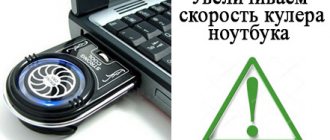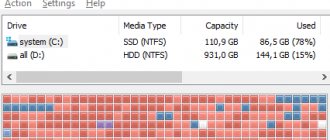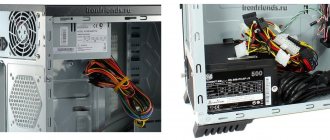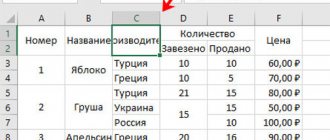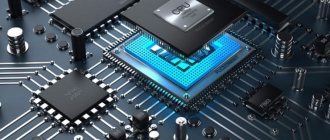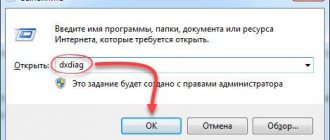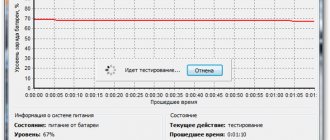Last updated - May 24, 2020 at 04:28 pm
In this article I want to discuss with you such a topic as a computer fan. Although liquid cooling systems are gaining popularity today, they are not suitable for the mass market. And the relevance of high-quality cooling of computer components only grows with the growth of their power. Air cooling of computer systems remains and will remain the most reliable and practical method for a very long time.
Those who are interested can read the article about types of PC cooling, but we will move on to analyzing the necessary performance characteristics and small life hacks that will be useful to the average user when choosing, purchasing and installing computer fans on their own.
general information
The number of computer fans in powerful system units can reach a dozen or more. Many people have a question: how can they be replaced or repaired if annoying noise occurs or the fan fails?
If you do not notice the failure of the fan in time, this can lead to the loss of expensive equipment due to its overheating.
This issue is especially relevant during the summer, when the average temperature in a home or office rises compared to the winter, and since computer fans take air from the environment, it also rises inside the computer system.
The quality of cooling of the entire computer system is affected by the size, rotation speed, performance, manufacturing technology and even the shape of the impeller blades.
A fan connected to a radiator is called a cooler
.
The radiator can have a variety of shapes, sizes, materials and manufacturing processes. Include components that help remove heat from the heating element more quickly and efficiently, such as heat pipes.
Buying and replacing a case fan is very simple, and every user who has at least some skills in handling a screwdriver can do it.
In most cases, it is impossible to replace a fan on a processor cooler or on a video card cooling system due to their non-standard sizes and mounting methods, which leads to the need to completely replace the cooling system of this unit.
To select and further purchase a high-quality case fan, CPU cooler or video card, you must have information about the main types, characteristics and design of fans. This will help you (if necessary) to independently remove, disassemble and lubricate the annoyingly noisy fan in the PC system unit.
After reading and studying this article, you will know very well how fans of different price categories differ from each other, learn to understand their technical characteristics, and you will be able to make the right choice in favor of one or another fan model for your computer when purchasing it. So let's get started...
Thermaltake Pure 20
This fan is large, its size is 200 mm. At the same time, it has an excellent design that provides high-quality ventilation. Of course, you can hear it during operation, but the noise level is 28 dBA, the rotation speed is 800 rpm.
Two types of design: black matte model and transparent with blue LED backlight. So the manufacturer values functionality rather than convenience to the maximum. Although sometimes you want a quieter operation of the device.
Device
A computer fan consists of three main parts ⇒
- Housings
- Impellers
- Electric motor
The fan housing is shaped like a frame and serves as the basis for mounting the electric drive (electric motor) and impeller blades. Depending on the manufacturer and the quality of the product, the housing can be made of plastic, metal or rubber.
The impeller is a set of blades arranged in a circle on the same axis with the electric motor at a certain angle and mounted on the fan housing using bearings of various types. During rotation, the impeller blades capture air and pass it through themselves, creating a constant directed air flow that cools the heating element.
In the production of computer fans, DC electric motors are used, which are rigidly attached to the fan housing.
Aerocool Orbit 120 RGB
This model is made in standard sizes, which indicates its versatility for different cases. There is also a hydrodynamic bearing and a backlight in the form of a wheel, which has a diameter of 120 mm. Thanks to the slightly curved blades, the air pressure is increased and the air flow is regulated, which in turn ensures silent operation due to the low resistance of the air masses.
This fan is equipped with special anti-vibration pads that are securely fixed in it. The impeller itself can be removed to, for example, make it easier to clean it or troubleshoot any problems.
The rotation speed reaches a maximum of 1200 rpm.
Sometimes this may not be enough for a computer with high performance.
Types and design of fans
Two types of fans are currently used to cool desktop computers, laptops, computer components and devices ⇒
- Axial (axial) fan
- Centrifugal (radial) fan or more common turbine (blower)
They differ in principle of operation and design ⇒
Axial fans are widely used in the design of cooling systems for various computer equipment due to their ease of manufacture and versatility. It is used to cool system units of computers, laptops, very hot electronics on motherboards, central processors, video cards, power supplies and other equipment.
The main way to use axial fans is to blow cooling radiators installed on electronic devices that require forced heat removal.
A centrifugal (radial) fan is a rotating rotor consisting of spiral blades. In this type of fan, air is drawn by a rotating rotor through a side hole, into the casing, where, due to centrifugal force, it is directed to a heated radiator, passing through the fins of which, it takes the heat emanating from them and removes it outside.
The radial fan is used mainly only for cooling laptops, video cards, and as additional cooling for powerful computers and low-profile servers (blower).
Turbine systems have not performed well in cooling modern video cards. Until recently, all NVIDIA and AMD reference video cards were equipped with such a cooling system. But many were dissatisfied with its operation, since it makes a lot of noise, and at the same time does not cool as well as conventional fans do. In its latest line of video cards, NVIDIA replaced the turbine with conventional fans, which had a positive effect on their cooling. I hope AMD does the same.
The advantage of centrifugal fans over axial fans is the ability to directly exhaust heated air outside the computer system unit and greater reliability due to their design features.
Diameter
There are only a few most popular sizes - 80, 92, 120 or 140 mm. There is a pattern that the larger the diameter of the blades, the better such a fan cools the insides of the system unit, and the less noise it makes during operation.
Please note that not every chassis has space for installing a large-diameter cooler. It is guaranteed to be in a tower-size case (read more about types of PC cases here), but it may not be in a mini-tower.
Which coolers are suitable for a computer in each specific case can be found in the accompanying documentation for the chassis. If there are no instructions, information is usually provided on the manufacturer's website.
Depending on the size, fans are used in the following cases:
- 80 and 92 mm - for cooling in small cases, for example, in office computers, and also specifically for cooling motherboards. About 10 years ago, such devices were widely used in ATX chassis.
- 120 and 140 mm - in large cases of powerful computers, for example, gaming ones.
- There are larger devices with non-standard mounting positions. They are used when additional powerful air flow is needed. Keep in mind that it is unlikely that it will be possible to install two such propellers side by side.
- Coolers with a diameter of up to 70 mm are used to cool small areas - for example, bridges on the motherboard. Due to the specifics, the choice of such devices is not very large.
Disassembly and lubrication
We may need to disassemble the computer fan to lubricate it or clean it from dust. I found an excellent video on foreign YouTube on this topic. It is in English, but all the main points are clear without translation.
The main dust collectors are the fan blades, and due to the high rotation speed, small dust particles settle tightly on the surface of the blades, and they can only be properly cleaned by hand, using any damp cloth or other similar material at hand. A vacuum cleaner or compressed air will not help here.
Using the example of disassembling an old axial fan on a plain bearing from ADDA (this company produces very high-quality fans, but I didn’t come across them for sale here), I’ll show you how to do it ⇒
- The first step is to carefully remove the sticker with the manufacturer's logo, preferably without damaging the adhesive base. We will still need it
- Next, remove the rubber or plastic plug that protects the bearings from the penetration of foreign particles into them (in fans using plain bearings, it also serves to prevent lubricant leakage)
- Well, the last thing, the most difficult thing, is to remove the fixing plastic washer from the impeller shaft
.
The fixing (locking) ring has a cut in one place and a rigid structure (it springs very easily), so when removing it, be very careful so that it does not fly off anywhere. Finding a thin and small ring will be difficult (tested in practice), and a fan without a retaining ring will not work. To remove it, it is better to use thin tweezers or any other object that will be convenient to pick it up and hold it.
After removing the retaining ring, the computer fan disassembly process is complete. We take out the impeller and start cleaning and lubricating.
Lubrication of fans assembled on a sliding bearing must be done with thick lubricants, since it is necessary that the lubricant be constantly on the metal axis of the fan during its operation.
It is enough to slightly lubricate the fan impeller axis itself, and after installing it in the frame with the electric motor, add a small amount of lubricant (to the level of installation of the retaining ring) from the back of the computer fan.
This is done so that during operation of the fan, lubricant, liquefied by heating, flows through the metal sleeve to the bearing and lubricates the space between them. I use CIATIM-201 lubricant. It can be purchased at radio parts stores.
Computer fans assembled on rolling bearings (ball bearings) are lubricated with liquid materials. Silicone oil PMS-100, PMS-200, which can also be purchased in radio parts stores, is excellent for these purposes.
Lubrication of such fans is complicated by the fact that the bearings are small and the gaps between the bearing housing and the balls themselves are very small. I personally lubricate them this way ⇒
- Taking the bearings out of the fan
- I wipe them well with alcohol (or something degreasing)
- I wipe them dry and for 15-20 minutes (while I clean and lubricate the fan itself) I throw them into a container with silicone oil.
- Then I take them out from there with tweezers, put them on the impeller shaft and assemble the fan
- Assembly is carried out in reverse order.
Noctua NF-P12 PWM
Well, the last one is an uncompromising option that combines the highest quality, performance and low noise level.
Fans from this Austrian brand are rightfully considered the best in terms of quality, characteristics, configuration and configuration flexibility.
Specifications Noctua NF-P12 PWM
| Thickness | 25 mm |
| Speed | 900-1300 rpm |
| Air flow | 54 CFM |
| Connector | 4-pin (MP) |
| Speed adjustment | PWM (PWM) |
| Bearing | with magnetic centering |
| Noise level | short |
| Equipment | screws, rubber fasteners, extension cord, step-down adapter, splitter |
The design of the blades provides an average air flow with good static pressure and low noise levels, which makes this fan universal - it can be installed anywhere.
It also features a proprietary magnetic centering bearing with self-stabilizing oil pressure for superior balance and durability.
A rich set of supplies will allow you to fix and connect the fan the way you want - with screws or silicone ties, and a separate extension cord will allow you to eliminate hanging or twisted wires where they are not needed.
Thanks to the included adapter, you can reduce the maximum fan speed while maintaining the ability to adjust the speed, since the step-down adapter can be connected to the motherboard.
In addition, there is an extremely useful splitter that allows you to connect two fans to one motherboard connector at once; this will be a lifesaver if there is a shortage of connectors.
High quality allows the manufacturer to provide a long warranty period for its fans, which is 5 years. In general, the fan from Noctua is the best choice, but it also has a corresponding price. Noctua NF-P12 PWM Fan Please note that Noctua has many models that vary greatly in impeller design and speed. Some are designed for maximum air flow, others for high static pressure.
There is also a special Redux series, characterized by the absence of mounts and adapters in the kit, which significantly reduces the price. If you only need a high-quality fan, pay attention to them.
PC Fan Specifications
The fans are characterized by the following main technical parameters ⇒
- Rotation frequency (speed). Measured in revolutions per minute or RPM (revolutions per minute)
- Generated Air Flow (CFM)
- Noise level (dB)
Rotational speed
How many revolutions around its axis can a fan impeller make in one minute?
Air flow
Fan performance is expressed in the amount of air flow generated and is expressed in cubic feet per minute (CFM). This means how much air the fan can pass through at a certain speed in one minute.
It is the air flow created by the fan that affects how much heat dissipation can be removed from the heating element in a certain unit of time.
The higher the CFM, the more efficient the fan. At the same time, it is worth paying attention to the level of noise it creates. In many cases, a less productive but quieter option may be preferable.
To increase airflow, it is better to use large, low-speed fans than small, fast ones. This will save you from unnecessary noise.
Noise level
Calculated in decibels. This characteristic is influenced by where and how the fan is installed, in what conditions it operates, the type of bearings installed, the quality of workmanship, the rotation speed and size of the fan, the number of blades and their shape. Read more at the end of the article.
How to choose a cooler for a PC case
Secondary aspects can be considered the appearance and design, geometry and number of impeller blades, built-in lighting, product packaging and commitment to a particular brand, which affects the price of the case fan. As can be seen from all of the above, choosing a cooler for a case is not as simple as it might seem at first glance.
Purpose of a case cooler
Unlike a CPU cooler, whose sole purpose is to cool the frantic heat of the processor, fans installed in a PC case serve to remove hot air and dust from the system unit. To achieve these goals, several coolers are installed in the case for blowing in and out, creating a circulation of air flow emanating outside. Blower fans, which create excess pressure inside, are usually paired with dust filters, which, due to inevitable gaps in the interface of structures, only partially cope with their functions. An exhaust fan whose power is higher than the blower fan can also be a source of dust being sucked into the housing. And some case models generally suffer from excessive “holeiness,” which also negatively affects their dust resistance. As a result, most of the accumulated dust particles settle on the impeller blades and are compressed there due to high fan speeds, causing background noise to appear while the computer is running.
Air circulation in the system unit involves a certain movement of flows aimed at blowing in and out. In modern cases with a bottom-mounted power supply, injection fans are installed at the front and bottom, and exhaust fans are installed at the back and top.
This organization of air movement makes it possible to additionally use natural circulation, which lifts cold currents from below to the most heated volume in the upper part of the body.
Popular CPU coolers Deepcool GAMMAXX 300 from 512 UAH. Deepcool GAMMAXX 400 from 761 UAH. Deepcool GAMMAXX GTE V2 from 767 UAH. Vinga CL3007R from 695 UAH. ID-COOLING SE-224-XT Basic from 859 UAH. Be quiet Dark Rock Pro 4 from 2,449 UAH. Vinga CL3011 from 269 UAH. Deepcool GAMMAXX 200T from 340 UAH. ARCTIC Freezer 34 eSports DUO from 1,728 UAH. ARCTIC Freezer 34 eSports from 1,375 UAH. PCCooler GI-UX4 Corona B from 598 UAH. Deepcool Lucifer V2 from 1,499 UAH. ID-COOLING SE-913-B from 419 UAH. Deepcool ICE EDGE MINI FS V2.0 from 239 UAH. Be quiet Dark Rock 4 from 1,949 UAH. Deepcool Gamma Archer Pro from 290 UAH. ID-COOLING SE-213V2 from 509 UAH. Deepcool Assassin III from 2,609 UAH. Deepcool GAMMAXX 400 EX from 999 UAH. Noctua NH-D15 from 2,735 UAH.
Design and connection types of case fan
The design of a simple cooling element for a system unit comes down to three main parts: the housing, the impeller and the electric motor.
Advanced models are equipped with a bearing unit, corner liners for fastening and vibration damping, as well as a resistor speed controller. Many modern products are equipped with LED lighting.
Fans may differ in connection type, and are most often equipped with a short wire with a 3-pin or 4-pin connector. Both options allow you to connect the cooler to power via the corresponding connector on the motherboard, but if in the first case the rotation speed is constant, then in the second it is possible to regulate it using a PWM signal from pin 4. Therefore, to gain full control over the rotation speed of the cooler, it is best to choose models with a 4-pin connector. Both connection types are mutually compatible and can be connected to the motherboard if the key is aligned correctly. Sometimes the fan is designed to be connected via the molex connector of the power supply. However, it is capable of operating only at maximum speed.
Water cooling for PC
ID-COOLING Frostflow X 120 from 1,161 UAH. MSI MAG CORELIQUID 240R from 3,099 UAH. Alseye X120 from 1,051 UAH. NZXT Kraken X63 from 4,984 UAH. Alseye X240 from 1,708 UAH. NZXT Kraken Z73 from 8,999 UAH. Deepcool GAMMAXX L240 V2 from 2,036 UAH. ID-COOLING Chromaflow 240 from 1,709 UAH. ID-COOLING Frostflow X 240 from 1,615 UAH. Deepcool GAMMAXX L120T from 1,246 UAH. NZXT Kraken X73 from 6,747 UAH. Deepcool GAMMAXX L240T from 1,611 UAH. Asus ROG Ryujin 360 from 6,999 UAH. Gamemax Iceberg 240 RAINBOW from 1,681 UAH. Enermax AquaFusion 240 from 3,199 UAH. Deepcool CASTLE 240 RGB V2 from 2,887 UAH. Gamemax Iceberg 360 from 2,086 UAH. ID-COOLING Frostflow X 360 from 1,994 UAH. NZXT Kraken X53 from 4,499 UAH. ID-COOLING Auraflow X 360 from 2,417 UAH.
Typical sizes of case coolers
In order for the fan to fit in the designated area of the case, it must be of the appropriate size. Typically, case manufacturers indicate the standard sizes of cooling devices suitable for installation, but if this information is not available, then you should measure the free space yourself. The sizes of case coolers can range from 40 to 200 mm, but most often you have to deal with the most common products with a diameter of 80, 92, 120 and 140 mm with a thickness of 15 to 40 mm.
Bearing options
To extend the service life, fans are equipped with bearing units of different types, which determine the time between failures. The two main types of rolling and sliding bearings differ in their design features:
- Rolling bearings. The traditional type of ball bearing with a service life of up to 90 thousand hours has high wear resistance and increased noise. Ceramic bearing units are characterized by low noise levels and increased heat resistance. They “run” up to 160 thousand hours.
- Sliding bearings. The simple sleeve bearing design is now rarely used due to its poor performance capabilities. Its resource is only 35 thousand hours. Improved technology of hydrodynamic bearings FDB bearing increases the service life of the cooler and significantly reduces the noise level. Self-lubricating LDP and SSO bearings have high wear resistance and a service life of up to 160 thousand hours. Finally, magnetically centered bearing units offer the quietest operation, reliability, and unsurpassed service life.
Cooling systems with RGB lighting
Deepcool RF 120 RGB 1pcs. from 164 UAH Deepcool GAMMAXX GTE V2 from 767 UAH. Vinga CL3011 from 269 UAH. Deepcool RF 120 RGB 3pcs. from 921 UAH Deepcool GAMMAXX GT from 1,531 UAH. Vinga RGB FAN-03 from 113 UAH. MSI MAG CORELIQUID 240R from 3,099 UAH. Chieftec TORNADO 3 in 1 RGB from 940 UAH. Alseye X12KIT from 324 UAH. Aerocool Astro 12 ARGB from 219 UAH. Aerocool Frost 12 PWM FRGB from 125 UAH. Alseye X120 from 1,051 UAH. Frime Iris Galaxy KIT from 621 UAH. ID-COOLING SE-224-XT ARGB from 1,076 UAH. Enermax ETS-T50 AX ARGB from 1,599 UAH. Zalman CNPS20X ARGB from 2,299 UAH. Deepcool Neptwin RGB from 1,490 UAH. Alseye X240 from 1,708 UAH. Deepcool GAMMAXX L240 V2 from 2,036 UAH. ID-COOLING XF-12025-ARGB-SINGLE from 285 UAH.
RPM, air speed and noise level
The generally accepted range of rotation speeds for a case fan impeller is from 600 to 3000 rpm. Moreover, the less revving the model, the less noisy it is. The acceptable noise level for a cooler is a threshold value of 30 dB, and the quietest models do not exceed 20 dB. Airflow speed, measured in cubic feet per minute (CFM), determines the cooling performance of a fan and requires choosing a model based on your application. The most powerful coolers have a high level of air flow of more than 75 CFM, which, on the other hand, is reflected in their noisy operation. Keep in mind that underestimating the airflow characteristics or incorrect calculation can render the whole idea of additional cooling of the case useless.
Silent computer cooler
Be quiet Pure Wings 2 PWM 120 from 299 UAH. ID-COOLING SE-213V2 from 509 UAH. Chieftec TORNADO 3 in 1 RGB from 940 UAH. Aerocool Astro 12 ARGB from 219 UAH. Deepcool XFAN 80 from 52 UAH. Xilence COO-XPF140 from 185 UAH. Be quiet Silent Wings 3 120 PWM from 589 UAH. Vinga 12025 LED from 86 UAH. Be quiet Pure Wings 2 PWM 140 from 329 UAH. Cooler Master R4-L2R-20AC-GP from 191 UAH. Noctua NF-P12 PWM from 484 UAH. Noctua NF-S12A PWM from 573 UAH. Noctua NF-P14s redux-1200 PWM from 446 UAH. Chieftec CF-1225RGB from 298 UAH. Be quiet Pure Wings 2 120 from 289 UAH. Xilence COO-XPF80 from 74 UAH. Be quiet Pure Wings 2 140 from 319 UAH. Aerocool Saturn 12F ARGB from 209 UAH. Vinga CL3010 from 219 UAH. Noctua NH-D14 from 2,494 UAH.
Cooler backlight - bright computer life
Modern models of PC cooling systems today are not content with banal ventilation functions, but also work as a kind of decoration. Single-color or RGB lighting of several coolers installed in a case with transparent walls looks very impressive in operation, putting you in a positive mood.
Cooling the system unit with variable speed control
After installing the selected fans into the case, the question often arises of how to control them in operation. Reobass is perfect for this purpose for comprehensive control and adjustment of the speed of all case fans. It is installed in a free 5.25-inch slot of the system unit and provides comfortable access to all built-in coolers with full visual information in real time.
Popular brands of case fans
In the list of popular brands of case coolers, which regularly take prizes in ratings and reviews, you can find products from such well-known manufacturers as Thermalright, Titan, Vinga, Arctic, Deepcool, Xilence, Cooler Master, Corsair, Zalman, Enermax, Scythe, and More advanced and expensive ones include the Austrian brand Noctua and the German be quiet!. These are products that have been proven over years of reliable operation, each with its own pros and cons, which, in spite of everything, grateful customers choose for their computers.
conclusions
The cooling system is an important element for the well-being of PC electronics, ensuring the reliability and performance of the operating system. This circumstance does not allow you to leave things to chance, but to seriously start looking for suitable fans for the system unit. We hope that when choosing a case cooler for your home, office or gaming “machine”, you will use the recommendations of this review.
Types of Bearings Used in Computer Fans
One of the most important parameters that you should pay attention to when choosing a fan for your computer is the type of bearings used in it.
There are several types of bearings on which computer fans are created. They influence such important parameters for us as reliability, time between failures and noise generated by the fan.
The types of bearings listed below are by far the most common in the production of computer fans.
There are also rarer and more expensive bearing options, which I will discuss below.
- Sleeve bearing
- Rolling bearing or ball bearing (Ball bearing)
The sliding bearing is very easy to manufacture and is therefore the cheapest of all types. To give stability to the impeller while it rotates, a metal or (in more advanced versions) ceramic cylinder is used, with a hole in the middle. It is into this hole that the steel axle is inserted, to which the impeller is attached.
Because of such a simple and cheap technical solution, all the disadvantages of this type of bearings arise.
When the fan has just been purchased and installed, it will please you with silence during its operation, but as soon as the lubricant begins to dry out (and this happens after about a year, depending on operating conditions), an unpleasant noise will appear.
It arises due to the resistance that appears when the impeller axis rubs against dried and contaminated lubricant inside the bearing.
Further prolonged operation of the fan without lubrication will lead to even more noise, the beginning of wear on the bearing itself, imbalance, and ultimately will lead to the complete impossibility of restoring the fan’s functionality, which will require its replacement.
The performance of a sliding bearing strongly depends on the ambient temperature; the higher it is, the faster the lubricant will dry out, and the more often you will have to clean and lubricate the fan itself, or replace it with a new one.
Also, one of the disadvantages of fans with plain bearings is their low efficiency when operating in a horizontal position. With this arrangement of the fan, the lubricant located inside the bearing flows to one side, which leads to its uneven distribution and faster failure of the fan.
From all that has been said, we can conclude that fans with plain bearings, especially high-quality models, can be effectively used in cooling computers that do not require strong heat removal and whose operating time does not exceed 8-10 hours a day (office or home low-power computers) .
It is not recommended to use fans based on plain bearings in servers, powerful gaming and laptop computers, or in video card cooling systems.
Despite all their shortcomings, such fans are the least expensive, and if you take care of them, lubricate them at the right time and clean them from dust, then they will be able to work for a long time without bothering you with unnecessary noise.
Now let's move on to higher quality and more expensive fan models built on the basis of two ball bearings ⇒
A ball bearing is a metal housing in the form of a ring and an inner sleeve with balls enclosed between them. The rolling bearing is not dismountable, so the lubricant inside it does not leak out. This significantly extends the life of the fan, and its performance deteriorates very slightly throughout the entire period of operation.
Also, a rolling bearing is less susceptible to high temperatures compared to a plain bearing, and is suitable for cooling computers that generate a lot of heat.
The level of acoustic noise emitted by modern fans equipped with ball bearings is no louder than that of new fans with plain bearings, and during the entire period of use it practically does not change, unlike its rival.
You are more likely to hear noise from the friction of air entering or exiting at high speed against the ventilation holes of your housing than the noise of the rolling bearings.
A fan on rolling bearings allows you to create on its basis much more thoughtful and efficient cooling options for computer systems, due to the ability to place them in any convenient position without fear of deteriorating the fan’s performance or reducing its service life.
Since a rolling bearing is technologically more complex to manufacture than a sliding bearing, it is accordingly more expensive and products based on it have a high price. And if you consider that a high-quality fan has two roller bearings, the price rises even more.
At the moment, choosing a fan with rolling bearings seems to me to be the best option. There are many manufacturers, the quality of the products is high, and prices, due to high competition, are at an acceptable level. It is recommended to install on all existing computers.
Purchasing these fans will save you from many problems associated with their maintenance, since their time between failures is approximately the life cycle of a modern computer, and you will change ball bearing fans along with the entire contents of your PC.
To produce one fan, combinations of different types of bearings can be used. For example, a fairly common option is a fan in which one plain bearing and one rolling bearing are installed.
This solution does not eliminate the existing shortcomings of fans, but allows manufacturers to save money and occupy the price niche they need, between expensive and cheap fan models, and for us to get a good product at an affordable price.
Ceramic Bearings
Rolling bearing, in the production of which ceramic materials are used. The performance properties of ceramics for the production of bearings exceed those of metal. The declared service life is twice as long as usual.
Ceramic rolling bearings allow the use of fans built on their basis at temperatures in which other types of bearings are unable to operate for a long time.
Today, these are the most durable bearings used in fans, but at the same time the most expensive.
Fluid Dynamic Bearings
A technologically advanced sliding bearing in which the rotation of the impeller shaft occurs in a layer of special lubricant that is constantly located inside the sleeve due to the pressure difference created during operation.
The noise level of a hydrodynamic bearing is considered the lowest.
The time between failures is almost twice as high as that of plain bearings, but lower than that of rolling bearings. Fans with this type of bearings are expensive and very rare due to the complexity of manufacturing. Produced only by a small group of manufacturers.
Rifle bearing
A sliding bearing with special grooves on the inside of the bushing and along the axis of the impeller fastening, along which the lubricant is evenly distributed. In terms of noise level and operating time, it approximately corresponds to the characteristics of a hydrodynamic bearing.
Connection type
Based on the type of connection, all coolers can be divided into 3 groups: 3 pin, 4 pin and Molex.
3 contacts (3 pin)
With this type, the fan is connected to the motherboard using 4 pin connectors, but only 3 of them are used. This means that adjusting the cooler’s performance (for example, the rotation speed of the blades) will be problematic.
4 contacts (4pin)
This connection method is the most reliable. It uses all 4 contacts, which allows you to adjust the rotation speed taking into account voltage changes.
Molex
The peculiarity of this type is that the connectors on the board are not needed at all: the connection is connected directly to the power supply. In this case, it is not possible to adjust the rotation speed.
Computer fan sizes
Since the electronics of computer systems that need cooling are of different sizes, fans of various power and sizes are required to cool them.
All computer fans that you can buy have standard sizes. When choosing computer components (especially cases), you should pay attention to this. In devices with non-standard fans, it will be very difficult, or even impossible, to replace a failed fan, which will lead to the need to replace the entire cooling system.
The cooling systems of many older video cards suffered greatly due to the installation of low-quality fans that failed before the video card became obsolete. I replaced coolers and fans, only for my computer, on two video cards (NVIDIA Geforce 4 Ti 4200 and ATI Radeon X800XT), but that was a long time ago.
This used to be a big problem, but cooling system manufacturers have now solved it thanks to the introduction of centrifugal (turbine) fans and much better axial fans.
Standard sizes of axial computer fans (in mm)
40Х40, 50Х50, 60Х60, 70Х70, 80Х80, 92Х92, 120Х120
The frame thickness of 80, 90 and 120 mm fans is 25 mm, although there are fans with a 15, 30 or 35 mm frame. The frames for smaller fans are 10, 15 mm.
Below in the image you can view both the overall and installation dimensions of the main standard sizes of computer fans (sorry for the small captions, click on the image for a more detailed view).
It is necessary to correctly measure the dimensions of the fan, as shown in the image below ⇒
Custom sizes of computer fans 95, 130 and 140 mm
130 and 140 mm fans appeared not so long ago, thanks to the increasing power requirements of cooling systems of modern computers.
Initially, for the most part, they were used to cool computer power supplies and coolers for cooling processors, but now the situation has changed.
Manufacturers of computer cases are also not lagging behind in equipping their brainchildren with seats for such new products.
Many wind blower manufacturers have begun producing 130 and 140 mm fans for retail sale.
It is worth paying attention to the fact that some brands, such as Noctua, Evercool and the like, have 130 and 140 mm fans that can be installed in 120 mm seats using additional fasteners or specially designed fan housing shapes.
The price of 140 mm fans is slightly higher than their smaller relatives, but for a little more money and a slight increase in size, you get more air flow per unit of time, lower fan speeds, and as a result, improved cooling of the system unit and reduced noise from it.
It can be assumed that over time, 140 mm fans will displace 120 mm, as was the case not so long ago with 92 mm, and will become the standard.
Replaceable 95 mm fans (non-replaceable fans are used in video card cooling systems) are used exclusively in coolers for cooling processors. Mostly for Intel processors.
There are few such fans produced, and they can only be purchased via the Internet or in large cities or retail chains.
Before reading further, take a break and watch the video about choosing a case fan ⇒
Deepcool GS120
Despite the fact that the Deepcool brand is a budget one, they have some pretty good case fans, and the GS120 is the most affordable among the quality models.
A distinctive feature of these fans is their smaller thickness, which allows them to be installed where standard models cannot (between the front grille and the chassis of the case or on the side wall opposite a tower cooler or a wide video card).
Characteristics of Deepcool GS120
| Thickness | 20 mm |
| Speed | 900-1800 rpm |
| Air flow | 62/40 CFM |
| Connector | 4-pin (MP) / Molex (BP) |
| Speed adjustment | PWM (PWM) |
| Bearing | hydrodynamic |
| Noise level | high Low |
| Equipment | rubber mounts, step-down adapter |
The advantages of this fan include, first of all, high quality materials, a good long cable and a well-balanced design. However, due to its thinner thickness, its performance is lower, which results in weaker airflow.
At the highest 1800 rpm, the fan performance is 62 CFM, which is not bad in principle, but the noise level in this mode is unacceptably high.
Yes, in the BIOS you can set the fans to Silent mode or configure the speed control manually. But this does not guarantee that they will not sometimes howl, accelerating to maximum speed at the moment of peak surges in processor temperature.
However, if you previously had only one fan in the case, there are no severe overheats and you just want to slightly increase the air flow, then you can connect these fans via the included step-down adapter. It connects to the power supply and the fans will spin at about 1000 rpm all the time. As a result, you will receive high-quality fans at a low cost that will work for a long time and very quietly.
In general, I would recommend these fans primarily if installing standard ones is simply not possible. Secondly, to create quiet assemblies using a step-down adapter. Fan Deepcool GS120
Connecting Computer Fans
All computer fans connected to the motherboard or power supply, in standard mode, operate on 12 volts.
Fans can be with or without automatic control of the impeller rotation speed (tachometer).
Types of fan contacts
All computer power supplies have a standard connector (Molex) to supply electrical current to various devices (hard drives, optical drives, and fans).
To connect to a computer power supply, fans can use either a regular four-pin connector (Molex type) or smaller versions.
To operate the fan, out of four contacts, only two are used (Ground and 12 volts).
This is what one of the most popular in desktop computer equipment looks like - a 4-terminal Molex power connector.
A fan connected to it with a standard pin arrangement on the power connector will run on 12V. If we need to reduce the fan speed, we can easily connect it to 5 or 7 Volts. To do this, we need to swap the wires in the fan power connector.
The contacts at the ends of the wires have a standard structure. They are fixed using a pair of bendable metal antennae in the plastic part of the connector. To remove a contact from the connector, you need to press these protruding antennae into the inside of the contact and then calmly remove the wire and insert it into the desired location of the connector.
To connect to connectors on the motherboard or other devices that can regulate fan speed, smaller connectors are used. They come in two, three or four pins
.
- The 2-pin connector has two wires and supplies a standard voltage of +12V
- In the 3-pin connector, in addition to ground and 12V, there is a wire for communication with the tachometer. The tachometer is designed to regulate the rotation speed of the fan impeller by changing the power supply voltage. This parameter is configured in the motherboard BIOS or special software
- Fans with 4-pin connectors are installed in cooling systems for processors and video cards. Their speed is adjusted automatically using PWM (pulse-width modulation). Depending on the temperature of the cooled element.
If there is no load on the central processor or video card, then they heat up weakly and do not need strong cooling. In this case, the PWM module reduces the fan speed to the minimum required values.
If the load increases, the heat generated by the processors increases, and the PWM module gradually, as the temperature rises, increases the fan speed to prevent overheating.
Computer fans can be equipped with two different types of connectors connected in parallel. This is usually a standard Molex and a small 3 or 4 pin connector. You can connect power to only one of them.
Regulating the rotation speed of computer fans in various ways significantly extends their service life and reduces the noise they emit.
Voting for the best fan for a computer case
Which computer case fan did you choose or recommend?
Gamdias Aeolus M2-1204R
31.25 % ( 5 )
Gamdias Aeolus M1A-1201
18.75 % ( 3 )
Dark Project FN-1
0.00 % ( 0 )
Titan TTC-SC07TZ (RB)
6.25 % ( 1 )
Aerocool Orbit 120 RGB
6.25 % ( 1 )
Deepcool GS120
12.50 % ( 2 )
RGB 12DR6
6.25 % ( 1 )
Zalman ZM-F1 Plus
0.00 % ( 0 )
Aerocool Motion 8 Plus
0.00 % ( 0 )
be quiet! Pure Wings 2
If you need a high-quality, quiet fan that fits well into the design of a black case, pay attention to Pure Wings 2 from the well-established German brand be quiet!
This is one of the best quiet solutions with average performance.
Characteristics of be quiet! Pure Wings 2
| Thickness | 25 mm |
| Speed | >1500 rpm |
| Air flow | 51 CFM |
| Connector | 3-pin (MP) |
| Speed adjustment | DC (MP) |
| Bearing | threaded |
| Noise level | short |
| Equipment | screws |
Despite the fairly high speeds, due to the narrow blades and the large distance between them, this fan creates an air flow of average power. But this ensures almost silent operation at medium speeds and quite quiet at maximum speeds.
The threaded bearing is an improved bushing with a screw thread, which, according to the manufacturer, significantly increases the service life of the bearing. He backs up his words with a 3-year guarantee and there is no doubt about the quality.
In the model range under the same brand there are many similar fans, including low (800 rpm) and high (2000 rpm) speeds - do not confuse them. There are also models with PWM, in extended configuration (with anti-vibration mounts and power adapters), but they are much more expensive. Fan Be quiet Pure Wings 2 120
Rotation speed and noise
The unit of measurement for this indicator is Decibels (dB). Its norm is considered to be a limit of up to 25 dB in large models and 35 dB in small ones. Rotation speed is the main aspect in the operation of the cooler, as it creates air flow for cooling. But these two indicators are interdependent: the higher the frequency, the higher the noise level. You need to select them so that their ratio meets the requirements of the system unit and at the same time does not interfere. On average, the ratio is as follows (diameter - revolutions):
- 80 mm. – from 2000 to 2700 rpm;
- 90-92 mm. – from 1300 to 2500 rpm;
- 120 mm. – from 800 to 1600 rpm.


